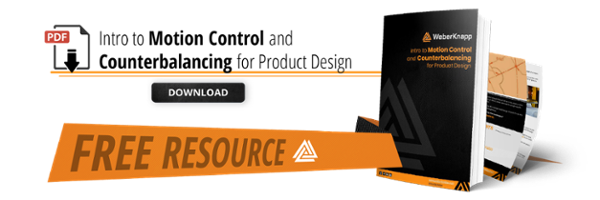
While it might not seem like ergonomics has a place in the retail setting, you’d be surprised. No matter the industry, investing in your workers’ ergonomic comfort can improve your workplace.
When your employees are operating in a safe, comfortable environment with the proper ergonomic accessories and practices in play, you can increase ROI and avoid expensive insurance claims.
Retail Store Ergonomics: Why Do They Matter?
The retail or grocery store presents a variety of potential injury risks, from lifting and moving items from delivery trucks, to shelving and scanning them. Falls, slips, and trips are common among retail workers as they go about their day-to-day tasks.
But, by giving your employees the proper ergonomic equipment and training, and emphasizing good posture, you can mitigate the risk of workplace injury.
While ergonomics for traditional office spaces is primarily about comfort, retail ergonomics is about safety. Training your employees on ergonomics best practices ensures they are happier and healthier, allowing them to perform their tasks longer and more efficiently. Numerous studies have shown that a robust ergonomics policy reduces worker’s compensation claims and improves company ROI.
How to Incorporate Ergonomics in Retail Design
Lack of information is one of the biggest barriers store managers face with retail ergonomics. As a result, they aren't in a position to train employees properly. According to the IBM Institute for Business Value, inadequate experience, equipment, and training prevents some retailers from embracing ergonomics entirely.
As such, if you choose to invest in retail ergonomics, you should first determine what your workers need at the workplace to maximize safety and improve their productivity. There are two valuable areas of ergonomic focus you can incorporate into your retail settings: products and practice.
Accessories for Retail Ergonomics
Promoting good retail ergonomics practices won't be easy without the products to back them up. To see the desired results, you may need to buy new chairs, keyboard arms, and other accessories -- the kinds of office staples managers are often loathe to replace.
Some of the products you should focus on replacing to improve flexibility, effectiveness, and ergonomics include:
- Computer carts on wheels (COWs)
- Keyboard trays
- Monitor arms
- Merchandise lifting mechanisms
- Ergonomic chairs
Computer Carts on Wheels
Many businesses use mobile computers, whether it’s for taking inventory or collecting patient information in a medical setting. A mobile medical cart can increase efficiency for your retail store by allowing associates to move easily about the store when handling inventory.
Plus, computer carts on wheels can be useful for cashiers who need to adjust the position of their system for optimal comfort.
Keyboard Arms and Trays for Computers
Shift to adjustable keyboard arms and trays that allow your employees to position the keyboard and mouse at the correct height. OSHA's Computer Workstation e-tool recommends the following:
- The keyboard should be right in front of you
- The shoulders should be relaxed and the elbows close to the body
- The wrists should be straight and in line with the forearms
These recommendations aim at putting the wrist in a neutral posture, which further puts the least amount of pressure and strain on the body.
Even if your employees aren’t using a keyboard all day, every day, poor wrist posture or typing techniques can have long-term effects.
Monitor Arms
While retail employees might not be using a computer as much as someone who works in an office, cashiers, and managers still get plenty of screen time.
The best ergonomic monitor arms allow users to adjust their height and orientation to a position that puts their back, neck, and eyes in better alignment. Go for monitor arms your employees -- of all shapes and sizes -- can easily adjust to their liking.
Merchandise Lifting Mechanisms
When arranging and retrieving items from shelves, your employees are repeatedly bending and straining their backs. With a lifting mechanism, their job will become less taxing, preventing musculoskeletal injuries that gradually develop from poor ergonomics.
For example, a book lift mechanism employed in libraries and museums brings books and other materials closer to hand-level, reducing the amount of bending employees have to do. Why not borrow the library’s idea for your own store?
Have questions on motion control or counterbalancing? Check out our free resource below:
Ergonomic Chairs
Only a select few retail or grocery stores provide their cashiers with chairs, but those that do need to consider if they’re the right chairs.
If a chair isn’t designed with ergonomics in mind, scanning items and cashing out customers might become more strenuous while sitting than while standing. A good ergonomic chair should have proper height adjustment for people of all sizes as well as proper lumbar support.
Retail Store Ergonomic Practices
Ergonomics isn’t just about the right accessories or equipment; there’s also a “best practices” component.
Some good practices you can promote include:
- Good posture: Encourage the correct posture when using keyboards and computers or when working at a desk or a cashier station. Sitting up straight with feet flat on the floor is a good place to start.
- Taking breaks: No matter how busy your business is, encouraging your employees to take breaks now and then will go a long way in boosting their productivity. We recommend that a desk worker gets up and moves around every 30 minutes.
- Proper footwear: Some businesses require steel-toed shoes, especially for stockroom workers. These shoes can be uncomfortable if worn for long periods of time. Encourage your employees to use shoe insoles or help them pay for better footwear.
- Proper lifting techniques and/or equipment: Many retail jobs require employees to lift boxes up to 50 lbs and without the proper lifting techniques, they stand to seriously injure themselves. Training employees to lift heavy objects with their legs not their backs -- or better yet, providing them with dollies or pallet jacks -- can reduce injury.
Ergonomics Improve Any Workspace
Correct retail ergonomics are key to promoting the good health of your employees. Your workers are your business's most valuable resource, and consistently ensuring they maintain the right ergonomics should be your top priority. When you put a premium on retail and grocery store employee safety, it not only improves your employees’ lives but the life of your business, too.
To learn more about what kind of ergonomic equipment is available for your business, check out our ergonomics page!
.png?width=12000&height=2033&name=WeberKnappLogo_white%20(1).png)



